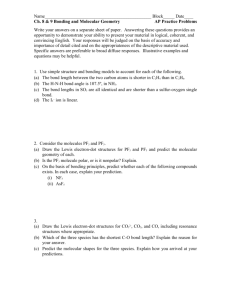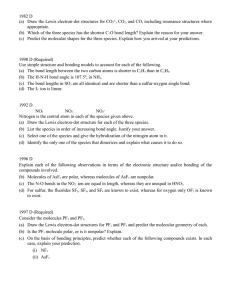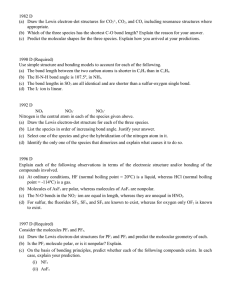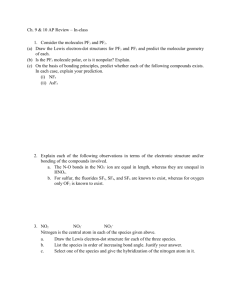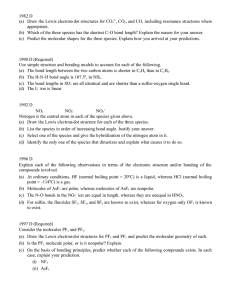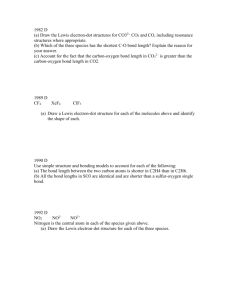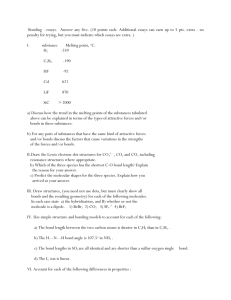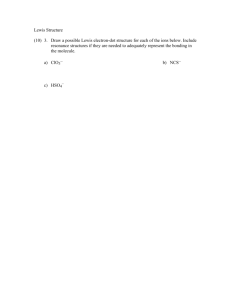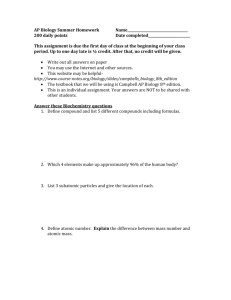Name_______________________________________________
advertisement
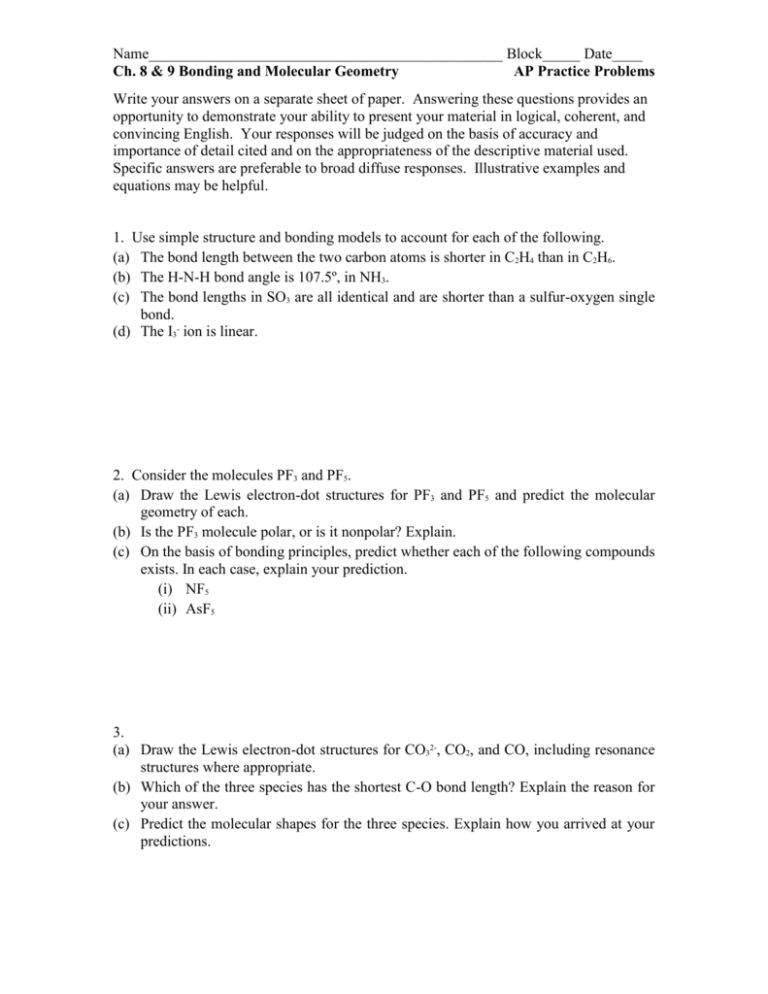
Name_______________________________________________ Block_____ Date____ Ch. 8 & 9 Bonding and Molecular Geometry AP Practice Problems Write your answers on a separate sheet of paper. Answering these questions provides an opportunity to demonstrate your ability to present your material in logical, coherent, and convincing English. Your responses will be judged on the basis of accuracy and importance of detail cited and on the appropriateness of the descriptive material used. Specific answers are preferable to broad diffuse responses. Illustrative examples and equations may be helpful. 1. Use simple structure and bonding models to account for each of the following. (a) The bond length between the two carbon atoms is shorter in C2H4 than in C2H6. (b) The H-N-H bond angle is 107.5º, in NH3. (c) The bond lengths in SO3 are all identical and are shorter than a sulfur-oxygen single bond. (d) The I3- ion is linear. 2. Consider the molecules PF3 and PF5. (a) Draw the Lewis electron-dot structures for PF3 and PF5 and predict the molecular geometry of each. (b) Is the PF3 molecule polar, or is it nonpolar? Explain. (c) On the basis of bonding principles, predict whether each of the following compounds exists. In each case, explain your prediction. (i) NF5 (ii) AsF5 3. (a) Draw the Lewis electron-dot structures for CO32-, CO2, and CO, including resonance structures where appropriate. (b) Which of the three species has the shortest C-O bond length? Explain the reason for your answer. (c) Predict the molecular shapes for the three species. Explain how you arrived at your predictions. Name_______________________________________________ Block_____ Date____ Ch. 8 & 9 Bonding and Molecular Geometry AP Practice Problems 4. Explain each of the following in terms of atomic and molecular structures and/or intermolecular forces. (a) Solid K conducts an electric current, whereas solid KNO3 does not. (b) SbCl3 has measurable dipole moment, whereas SbCl5 does not. (c) The normal boiling point of CCl4 is 77ºC, whereas that of CBr4 is 190ºC. (d) NaI(s) is very soluble in water, whereas I2(s) has a solubility of only 0.03 gram per 100 grams of water. 5. NO2 NO2NO2+ Nitrogen is the central atom in each of the species given above. (a) Draw the Lewis electron-dot structure for each of the three species. (b) List the species in order of increasing bond angle. Justify your answer. (c) Select one of the species and give the hybridization of the nitrogen atom in it. (d) Identify the only one of the species that dimerizes and explain what causes it to do so. 6. Experimental data provide the basis for interpreting differences in properties of substances. TABLE 1 Melting Electrical Compound Point (ºC) Conductivity of Molten State (ohm-1) BeCl2 405 0.086 MgCl2 714 > 20 SiCl4 -70 0 MgF2 1261 > 20 TABLE 2 Substance Bond Length (angstroms) F2 Br2 N2 1.42 2.28 1.09 Account for the differences in properties given in Tables 1 and 2 above in terms of the differences in structure and bonding in each of the following pairs. (a) MgCl2 and SiCl4 (c) F2 and Br2 (b) MgCl2 and MgF2 (d) F2 and N2
